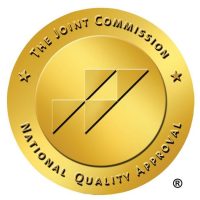Chronic pain plagues an estimated 50% of the elderly population, making it a predominant health concern in geriatric care. With the rise in the aging population, there’s an urgent need for effective chronic pain management techniques. By incorporating adaptive strategies for chronic pain, seniors can lead fulfilling, comfortable lives.
Understanding Chronic Pain in the Geriatric Population
The first step in pain management education is understanding that chronic pain in the geriatric population is a complex issue. It can be a standalone condition or symptomatic of another illness. Given its persistent nature, chronic pain can significantly impair a senior’s quality of life. Thus, a multi-pronged approach involving various pain relief strategies is necessary.
Strategies for Chronic Pain Management
There’s no one-size-fits-all solution to managing chronic pain. However, here are some proven strategies that can help:
Lifestyle Changes for Pain Management
Lifestyle changes for pain management can significantly improve the quality of life. Regular exercise, balanced nutrition, adequate sleep, and staying socially active can help manage pain. For instance, studies have linked exercise and chronic pain, showing that low-impact activities like walking, swimming, or yoga can increase strength and flexibility, and also reduce pain levels.
Nutritional Strategies for Pain Reduction
Adopting nutritional strategies for pain reduction involves eating a balanced diet rich in fruits, vegetables, lean proteins, and whole grains. Certain foods — like those rich in omega-3 fatty acids and antioxidants — can help fight inflammation and reduce pain. Additionally, staying hydrated is essential.
Physical Therapy and Exercise
Physical therapy for seniors is a non-pharmacological approach that often forms the cornerstone of chronic pain management. Therapists can create personalized exercise regimens that improve strength, mobility, and function, thus reducing pain.
The Role of Assistive Devices
Assistive devices for pain relief can support seniors in daily activities, reduce stress in painful areas, and improve mobility. These devices range from ergonomic furniture and mobility aids to innovative pain relief devices.
The Power of Mindfulness and Meditation
Practicing mindfulness and pain management strategies like meditation can help seniors cope with pain. By focusing on the present and accepting their pain, seniors can lessen its impact on their life.
The Role of Caregivers in Pain Management
The role of caregivers in pain management cannot be underestimated. Whether they’re family members or professionals at assisted living facilities, caregivers can assist in implementing pain management strategies, observe changes, and provide emotional support.
Intervention Programs for Chronic Pain
Intervention programs for chronic pain can encompass various therapies like cognitive-behavioral therapy, biofeedback, and relaxation techniques. These programs can equip seniors with coping mechanisms for chronic pain and promote self-management of it.
Comfortable Living for Seniors: The End Goal
The ultimate goal is to provide comfortable living for seniors. Chronic pain management is a journey, not a destination. With continual effort, empathy, and support, seniors can lead a comfortable, fulfilling life despite chronic pain.
At Celebrate Senior Living, we are committed to celebrating the moments, victories, and memories that will last a lifetime for our residents and their loved ones. We are a Midwest-based foundation that serves Illinois and Indiana residents by offering Independent Living, Assisted Living, Memory Care, and Skilled Nursing living options. We also provide three delicious, healthy meals a day to ensure our residents get the nutrients they need!
If you or a loved one are interested in senior living options, schedule a tour with us today! You can also learn more by exploring our communities, which include South Holland, Niles, and Fort Wayne, or by contacting us with any other questions!
